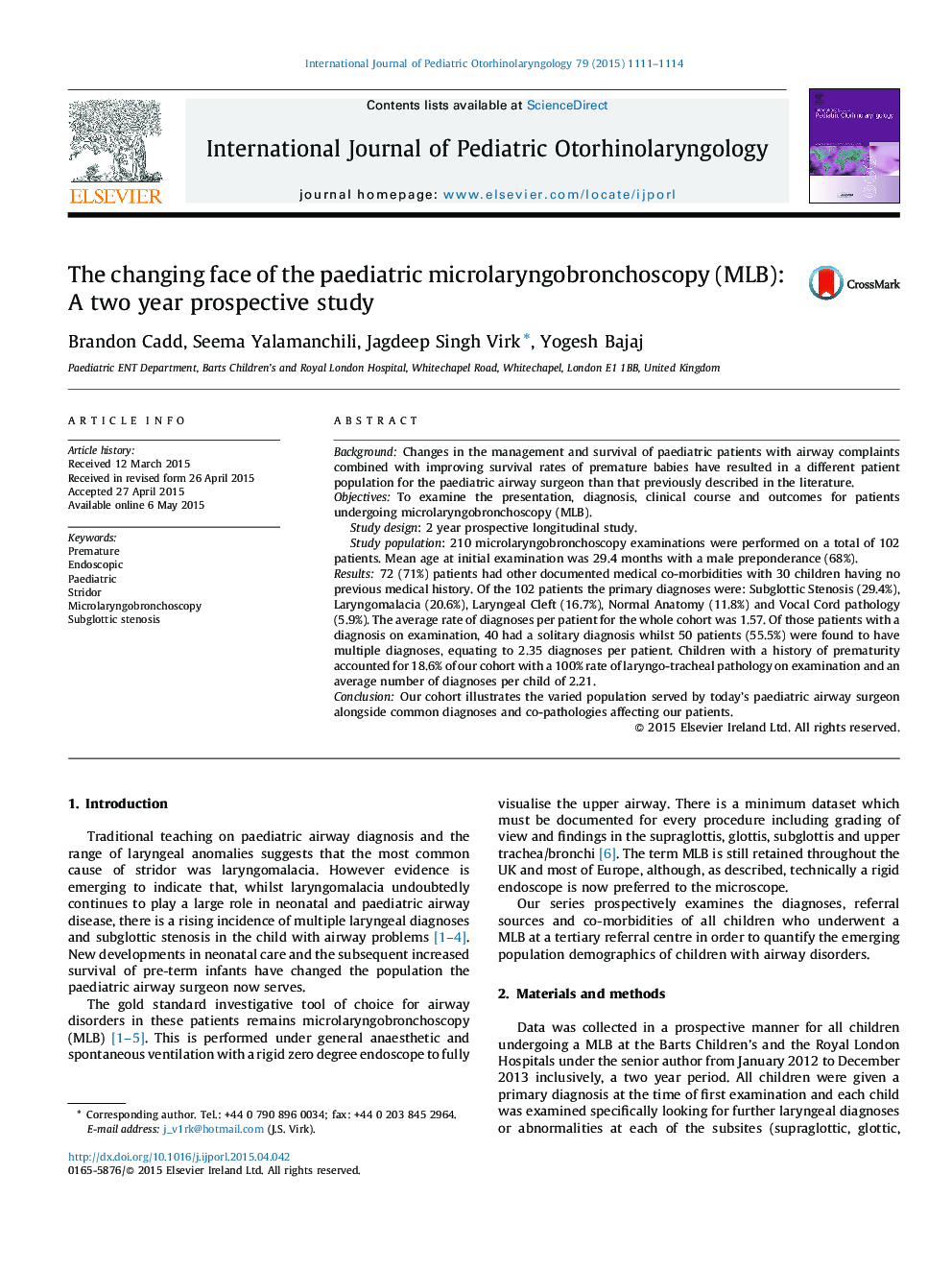| Article ID | Journal | Published Year | Pages | File Type |
|---|---|---|---|---|
| 4112195 | International Journal of Pediatric Otorhinolaryngology | 2015 | 4 Pages |
BackgroundChanges in the management and survival of paediatric patients with airway complaints combined with improving survival rates of premature babies have resulted in a different patient population for the paediatric airway surgeon than that previously described in the literature.ObjectivesTo examine the presentation, diagnosis, clinical course and outcomes for patients undergoing microlaryngobronchoscopy (MLB).Study design: 2 year prospective longitudinal study.Study population: 210 microlaryngobronchoscopy examinations were performed on a total of 102 patients. Mean age at initial examination was 29.4 months with a male preponderance (68%).Results72 (71%) patients had other documented medical co-morbidities with 30 children having no previous medical history. Of the 102 patients the primary diagnoses were: Subglottic Stenosis (29.4%), Laryngomalacia (20.6%), Laryngeal Cleft (16.7%), Normal Anatomy (11.8%) and Vocal Cord pathology (5.9%). The average rate of diagnoses per patient for the whole cohort was 1.57. Of those patients with a diagnosis on examination, 40 had a solitary diagnosis whilst 50 patients (55.5%) were found to have multiple diagnoses, equating to 2.35 diagnoses per patient. Children with a history of prematurity accounted for 18.6% of our cohort with a 100% rate of laryngo-tracheal pathology on examination and an average number of diagnoses per child of 2.21.ConclusionOur cohort illustrates the varied population served by today's paediatric airway surgeon alongside common diagnoses and co-pathologies affecting our patients.
